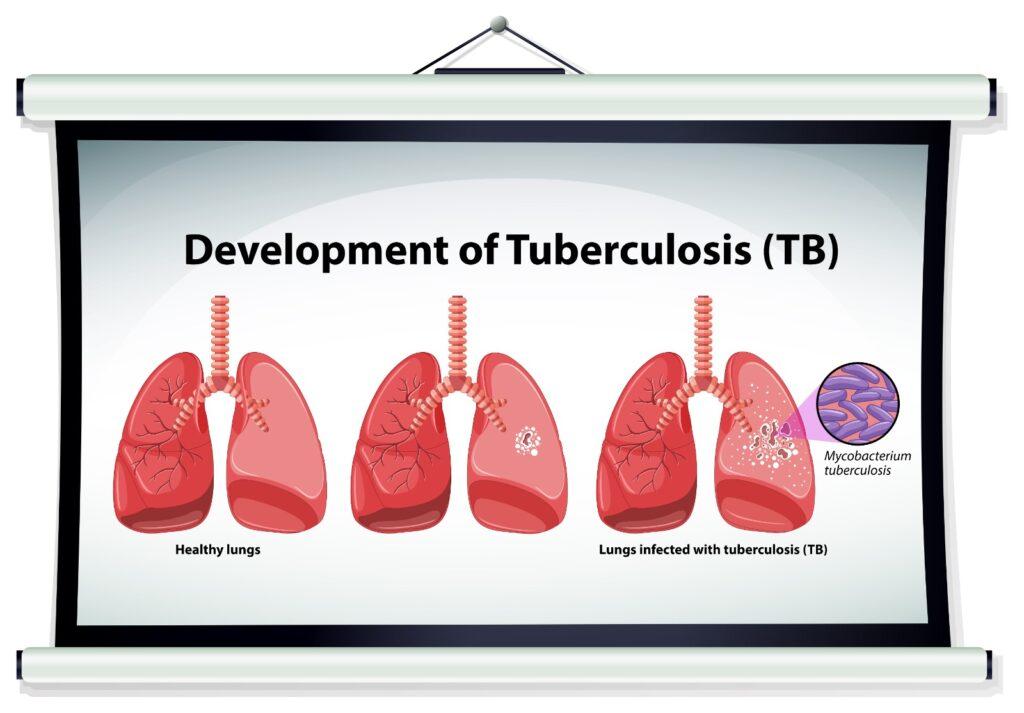

Tuberculosis (TB) is an infectious disease caused by the bacterium Mycobacterium tuberculosis. It primarily affects the lungs but can also target other parts of the body. With millions of people worldwide affected by TB, understanding its transmission and prevention methods is crucial. In this article, we will explore the various aspects of tuberculosis transmission and discuss preventive measures that can be taken to control its spread.
## Table of Contents
1. Introduction
2. Understanding Tuberculosis Transmission
3. Modes of Transmission
4. Tuberculosis Prevention
5. Importance of Early Diagnosis
6. Treatment and Management
7. Conclusion
8. Frequently Asked Questions (FAQs)
## 1. Introduction
Tuberculosis is a contagious disease that spreads from person to person through the air. When an infected individual coughs, sneezes, or talks, they release droplets containing the bacteria into the air. These droplets can then be inhaled by others, leading to infection. Understanding how TB is transmitted is vital for implementing effective prevention strategies.
## 2. Understanding Tuberculosis Transmission
Tuberculosis transmission occurs when a person with active TB disease spreads the bacteria to others. It is important to note that not everyone infected with the bacteria develops active TB. In some cases, the bacteria remain dormant, causing no symptoms. This is known as latent TB infection. However, latent TB can become active if the person’s immune system weakens, making them susceptible to developing TB disease.
## 3. Modes of Transmission
The primary mode of TB transmission is through the inhalation of infectious droplets expelled by an individual with active TB disease. These droplets can stay suspended in the air for several hours, creating a risk for anyone in close proximity to the infected person. Factors such as the duration and intensity of exposure, ventilation, and the infectiousness of the individual play a role in determining the likelihood of transmission.
## 4. Tuberculosis Prevention
Preventing the spread of tuberculosis is essential to control its impact on public health. Here are some key preventive measures that can be taken:
### H1: Promoting Awareness and Education
Raising awareness about tuberculosis, its symptoms, and transmission can help individuals recognize the disease early on and seek appropriate medical care. Educational campaigns, community outreach programs, and collaboration with healthcare providers can play a vital role in disseminating information.
### H2: Identifying and Treating Latent TB Infection
Detecting and treating latent TB infection is crucial in preventing the development of active TB disease. Individuals with latent TB can be prescribed preventive treatment to reduce the risk of progression to active disease.
### H2: Implementing Infection Control Measures
In healthcare settings, proper infection control measures are necessary to minimize the transmission of TB. This includes ensuring adequate ventilation, using personal protective equipment, isolating infected patients, and conducting regular screenings of healthcare workers.
### H3: Vaccination Programs
The Bacillus Calmette-Guérin (BCG) vaccine is available in some countries and can provide partial protection against severe forms of TB, such as TB meningitis in children. However, its efficacy in preventing pulmonary TB, the most common form of the disease, is limited.
### H3: Contact Tracing and Testing
Identifying individuals who have been in close contact with an active TB case and providing them with testing and appropriate treatment can help break the chain of transmission.
### H4: Improving Living Conditions
Socioeconomic factors, overcrowding, and poor ventilation contribute to thespread of tuberculosis. Improving living conditions, particularly in vulnerable communities, is crucial in reducing the risk of TB transmission. Access to clean and well-ventilated living spaces, adequate nutrition, and healthcare services can significantly impact the overall burden of the disease.
### H4: Promoting Healthy Behaviors
Encouraging healthy behaviors can also contribute to preventing the spread of tuberculosis. This includes promoting good respiratory hygiene, such as covering the mouth and nose when coughing or sneezing, and proper disposal of tissues. Additionally, advocating for regular handwashing and avoiding close contact with individuals who have active TB disease can help reduce the risk of transmission.
## 5. Importance of Early Diagnosis
Early diagnosis of tuberculosis is essential for effective treatment and prevention of further transmission. Prompt identification of active TB cases allows for timely initiation of treatment, reducing the infectiousness of the individual and the likelihood of spreading the disease to others. Diagnostic methods include chest X-rays, sputum tests, and tuberculin skin tests. Enhanced access to diagnostic facilities, particularly in areas with a high TB burden, is crucial for early detection and control.
## 6. Treatment and Management
Treating tuberculosis involves a combination of medications known as anti-TB drugs. The standard treatment regimen consists of multiple drugs taken over a specified duration. Adherence to the treatment regimen is vital to ensure successful outcomes and prevent the development of drug-resistant TB. Additionally, patients with active TB should follow infection control measures, such as covering their mouths when coughing, to prevent transmission to others during the treatment period.
## 7. Conclusion
Tuberculosis remains a significant global health concern, with its transmission posing a threat to individuals and communities worldwide. Understanding the modes of transmission and implementing effective preventive measures are crucial in controlling the spread of the disease. By promoting awareness, early diagnosis, appropriate treatment, and improved living conditions, we can strive towards a world with reduced tuberculosis burden.
